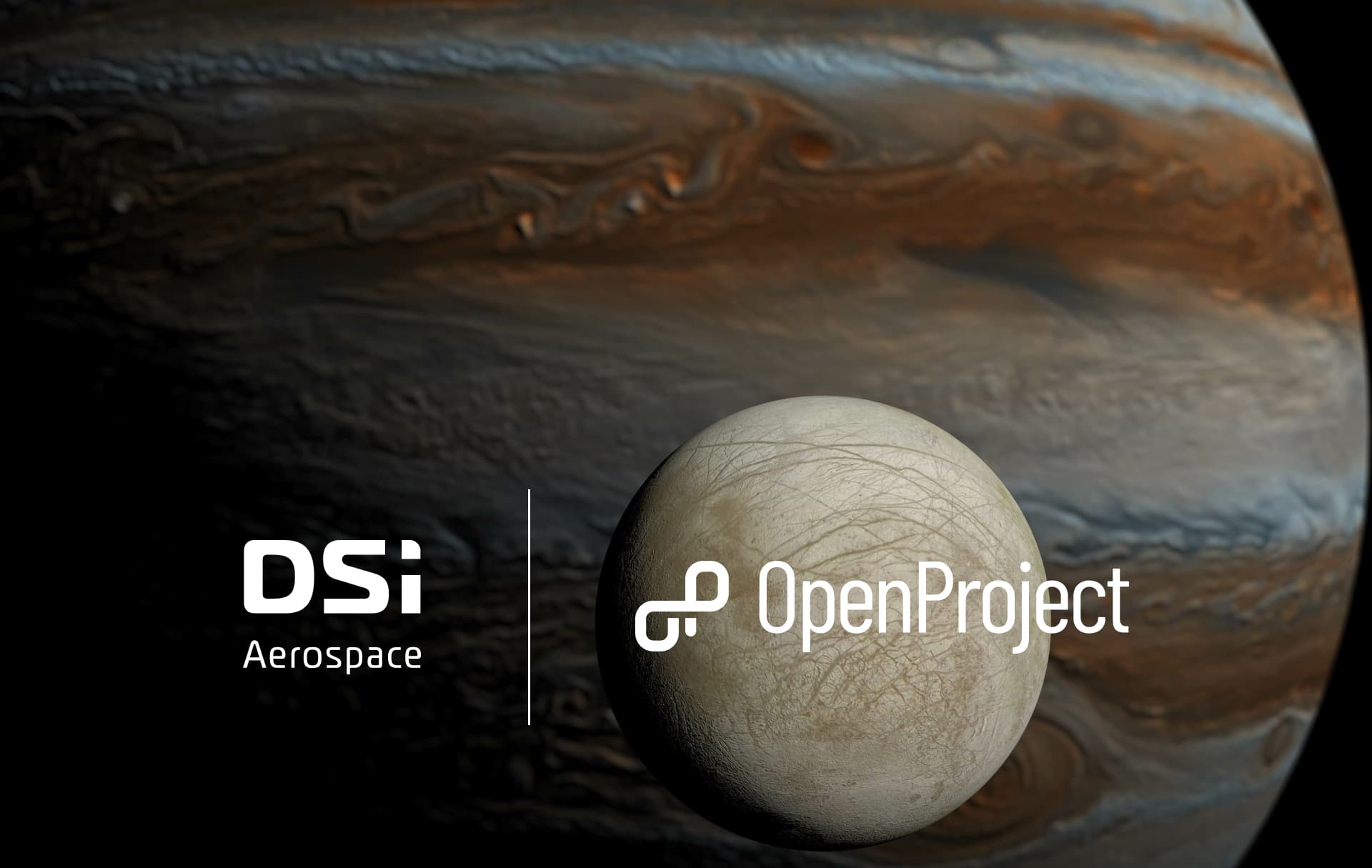
Juice: OpenProject camino de Europa
Europa, la luna helada de Júpiter, está considerada como la candidata más prometedora a albergar vida extraterrestre en el sistema solar. Gracias a una empresa espacial de Bremen, OpenProject también está a bordo.
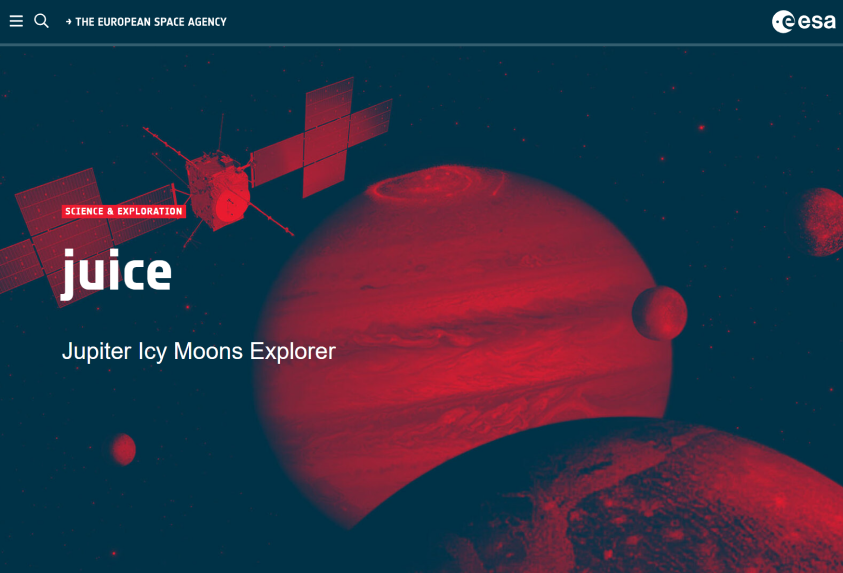
Fuente de la imagen: Página web de Juice - https://www.esa.int/Science_Exploration/Space_Science/Juice
Actualmente, la ESA va un paso por delante de la NASA en la carrera hacia Europa: cuando los científicos estadounidenses lancen su misión a Júpiter «Europa Clipper» a mediados de octubre, la misión a Europa de la ESA llevará ya un año y medio en marcha, también con la ayuda de OpenProject.
Bajo el nombre de JUICE (JUpiter ICy moons Explorer), la Agencia Espacial Europea y sus socios quieren explorar las lunas heladas del gigante gaseoso, sobre todo Ganímedes, Calisto y Europa.
En busca de vida
En Europa en particular, los científicos creen repetidamente que hay muchas posibilidades de encontrar vida extraterrestre y de hallar condiciones que permitan a los humanos crear estaciones espaciales permanentes.
Europa ha suscitado repetidas especulaciones en el pasado, desde la literatura de ciencia ficción hasta clásicos del cine como «2001» o el thriller de metraje encontrado «Informe Europa». Pero en realidad, es probable que sea mucho más difícil encontrar rastros de vida, y por eso las dos misiones Europa se consideran hitos con numerosos instrumentos y experimentos de alta gama y software de código abierto a bordo.
JUICE sobrevolará las lunas 35 veces, investigando aspectos como su actividad geológica, sus campos magnéticos y los grandes océanos que hay bajo el hielo. Forma parte de una misión más amplia que abarca un total de 20 años, en los que las sondas volarán a Júpiter, aterrizarán en Europa, fundirán la capa de hielo y explorarán el océano que hay debajo -este último es el objetivo del proyecto TRIPLE. Las pruebas para esta misión ya han comenzado: A finales de 2026 los científicos de la estación antártica alemana perforarán el agua bajo la capa de hielo y la observarán de cerca.
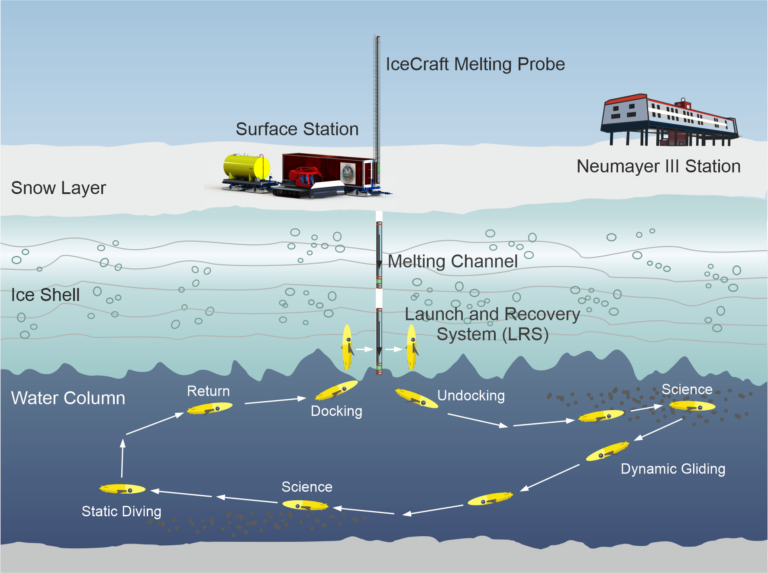
Fuente de la imagen: Proyecto TRIPLE - https://triple-project.net/, Créditos: Maximilian Nitsch/Universidad RWTH Aachen.
Los productos de DSI Aerospace de Bremen, cliente de OpenProject desde hace mucho tiempo, juegan un rol importante en todos estos planes: DSI desarrolla, organiza y construye hardware crítico como las unidades de almacenamiento Memoria Masiva de Estado Sólido en el CDMS (Subsistema de Mando y Gestión de Datos), es decir, el sistema que carga los datos desde diversos medios de almacenamiento y los prepara y supervisa para el enlace descendente con la Tierra.
«La construcción de la instalación central de almacenamiento masivo para la misión Juice de la ESA fue un gran reto y muy emocionante, ya que el plazo de finalización de las obras estaba determinado por unos requisitos de lanzamiento muy estrictos. Por último, fue muy impresionante ver el lanzamiento del satélite, que solo tenía una ventana de lanzamiento de 8 segundos».

DSI está «entre los 3 primeros del mundo» en unidades de almacenamiento masivo para viajes espaciales (y electrónica espacial en general). La empresa construye tarjetas flash con dos o tres placas y ha desarrollado por sí misma algoritmos y criptografía para la integridad de los datos desde el principio.
Sin embargo, lo que hace esta empresa con sede en Bremen no se limita al almacenamiento de datos. La protección contra inundaciones basada en IA está diseñada para ayudar a prevenir la inundación de los trofes y estudios científicos como „Dr. Beat“ están siendo desarrollados y probados en la Estación Espacial Internacional (ISS). El sistema de sensores consta de wearables de última generación, está integrado en una camiseta y puede monitorizar la función cardiaca de los astronautas en gravedad cero con ayuda de la balistocardiografía (BCG). El Dr. Beat mide las funciones corporales durante largos periodos de tiempo, utiliza una miniaturización extrema de los sensores y sigue siendo absolutamente fácil de usar, simplemente como una camiseta de uso cotidiano. Leyendas de la astronáutica como Matthias Maurer y Samantha Cristoforetti han llevado las camisetas del DSI y han puesto a disposición sus datos.

Fuente de la imagen: DR.BEAT DSI Aerospace - https://www.dsi.space/dr-beat/
Para gestionar sus proyectos de alta tecnología, DSI utiliza la potencia del software de código abierto, concretamente OpenProject. Konstantin Geißinger, Director Adjunto de RND (Investigación y Desarrollo) y Marketing: «También utilizamos Open Project en investigación, por ejemplo, para la prevención de catástrofes en las montañas de Harz o para el Proyecto Triple. Creamos un proyecto individual para cada estudio y lo utilizamos para toda la planificación, organización y control del trabajo».
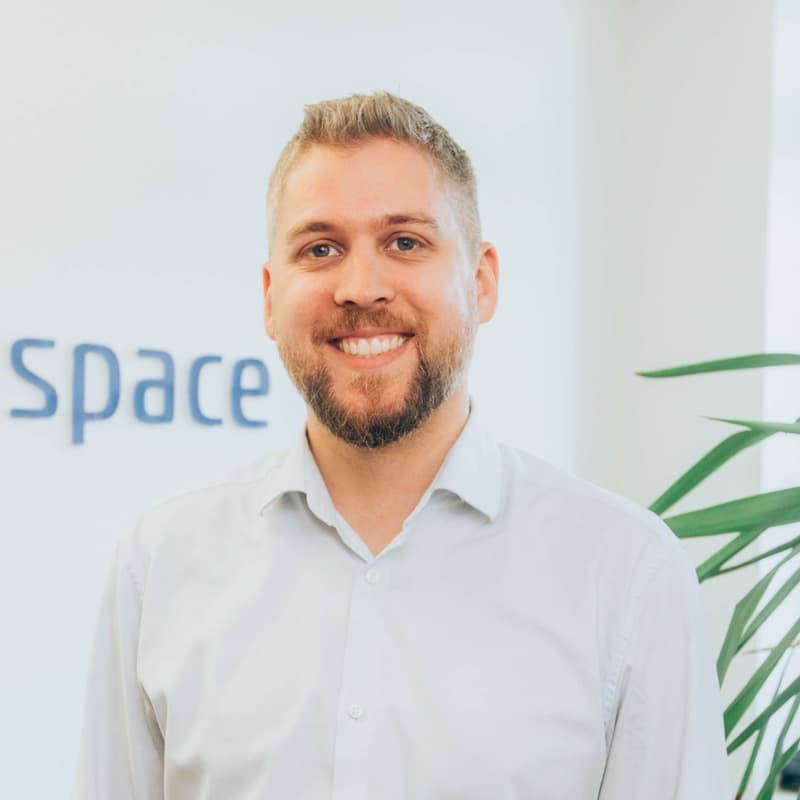
La decisión a favor del software de código abierto OpenProject fue fácil: las soluciones en la nube estaban descartadas para DSI, y también había razones funcionales. Sin embargo, la protección de datos, la seguridad y la fiabilidad jugaron el rol más importante. Aunque la propia DSI no tiene mucho que patentar, prefiere las soluciones in situ.
El factor decisivo para OpenProject fue también la configurabilidad profunda y fiable, que hace que el software destaque en el mercado en términos de facilidad de uso y transparencia. Esto incluye también el hecho de que siempre es posible trabajar de forma transparente en la hoja de ruta y aportar comentarios junto con los desarrolladores del software, algo que no es posible con todos los fabricantes propietarios.
Más de 16 estudios del sector aeroespacial
Actualmente hay unos 16 estudios en marcha en el DSI, la mayoría en el contexto aeroespacial. Todos los empleados del departamento de investigación y desarrollo, es decir, uno de cada cuatro en las tres sedes de DSI, utilizan OpenProject a diario. Según Geißinger, esto ha facilitado mucho la colaboración, «el trabajo y la coordinación son mucho más eficaces, ahora se tiene una buena visión de conjunto en todo momento, la herramienta es intuitiva, flexiblemente configurable y fácil de usar».
DSI gestiona una instancia de Ubuntu para OpenProject, en la que uno de los 14 desarrolladores se encarga de las actualizaciones necesarias y de realizar una copia de seguridad una vez a la semana. Geißinger también considera que las ventajas particulares del modelo de código abierto son «la gran sensación de seguridad, porque cualquiera puede ver el código en cualquier momento, pero también el concepto de comunidad y la adaptabilidad flexible, típica del código abierto». OpenProject se utiliza para planificar estudios, definir paquetes de trabajo y asignar tareas. La planificación del tiempo se realiza -también de forma colaborativa- en diagramas de Gantt, las listas de proyectos se utilizan para crear resúmenes de los estudios individuales, características todas ellas que también se utilizan para una clara evaluación de los recursos. DSI también utiliza activamente reuniones en OpenProject, y se utilizan tableros Agile de los equipos para los proyectos internos.
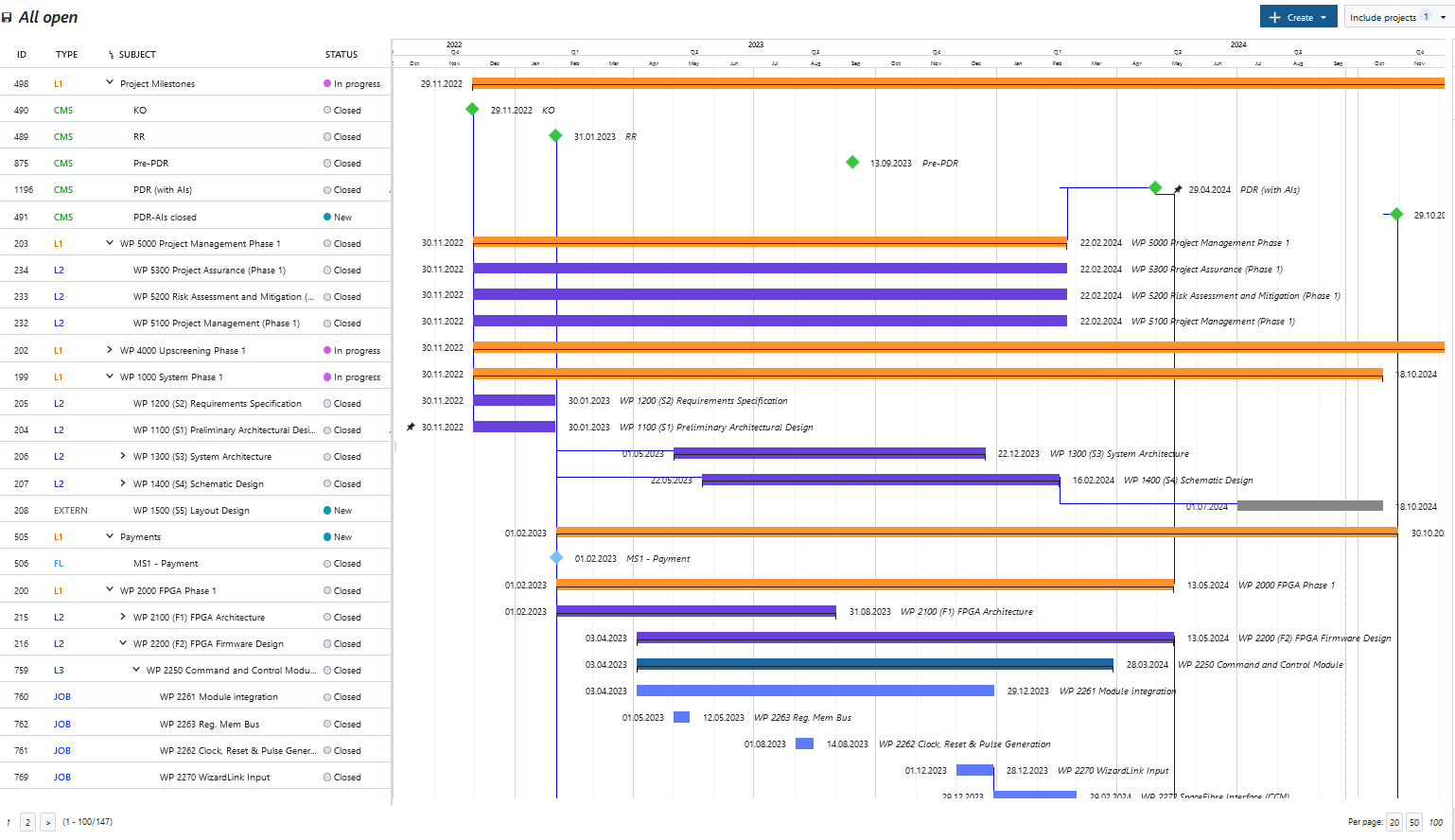
OpenProject se utiliza aún más en el departamento de marketing de DSI. El equipo utiliza subproyectos, paquetes de trabajo, por ejemplo, para las listas de tareas pendientes, tableros y planificador de equipo para sus propios proyectos. Para una planificación detallada con sus propios tipos «específicos para cada espacio» («niveles» que van de internos a externos, por ejemplo), existen tanto estimaciones de esfuerzo como información para el control, que puede crear rápidamente previsiones a partir de las vistas de recursos. «Todos los empleados pueden ver en todo momento quién tiene asignada cada tarea, lo que resulta muy útil, y la presentación es atractiva e intuitiva, por lo que es un placer trabajar con ella», afirma Geißinger.
OpenProject a bordo
DSI Aerospace utiliza OpenProject con éxito para la planificación y ejecución de sus diversos estudios, incluidos estudios para misiones espaciales como la misión JUICE de la ESA. OpenProject permite a DSI planificar y ejecutar proyectos de forma eficaz gracias a funciones intuitivas, flexibles y transparentes que pueden personalizarse individualmente. Destacan las ventajas de seguridad garantizadas por el uso in situ y la filosofía de código abierto. En investigación, desarrollo y marketing, OpenProject facilita la planificación y la colaboración y ofrece una gestión clara de los proyectos, lo que ha supuesto un aumento significativo de la eficacia en DSI.
El equipo de OpenProject mantiene los dedos cruzados por estos emocionantes esfuerzos.


